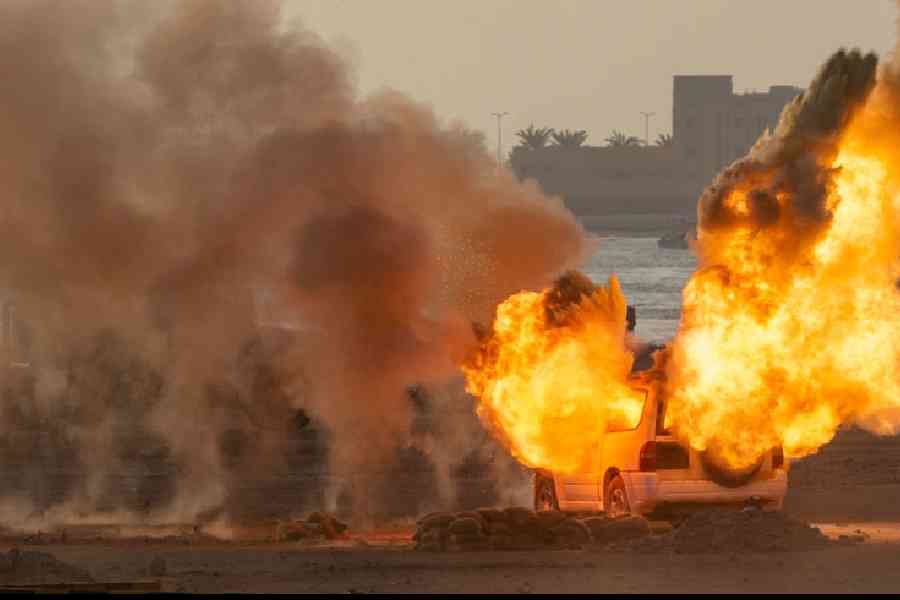An American-made precision guided bomb that homes in on specific targets and, ideally, limits civilian casualties, was used in airstrikes in Gaza that killed dozens of Palestinians, including women and children.
The weapon, the GBU-39, or small-diameter bomb, was used in an attack at a former United Nations school on Thursday and in a May 26 strike in Rafah. In both cases, the Israeli military defended its actions, saying the strikes were aimed at militants using civilians as human shields. The Gaza health authorities said that civilians had also been killed, and there were videos and pictures of women and children among the dead.
Two weapons experts told The New York Times that Israel has appeared to increase the use of the bombs since the start of this year, compared with the war’s earliest days, when it launched them in only 10 per cent of airstrikes against Gaza. As a recent spate of Israeli strikes demonstrates, even a relatively diminutive bomb can inflict severe civilian casualties.
“The thing is, even using a smaller weapon, or using a precision guided weapon, doesn’t mean you don’t kill civilians, and it doesn’t mean that all of your strikes are suddenly lawful,” said Brian Castner, a weapons expert at Amnesty International.
Early in the war, the Israeli military mounted full-scale invasions of Gazan cities with tanks, artillery and 2,000-pound bombs, earning it international condemnation for heavy civilian casualties.
Under prodding from the Biden administration, analysts said, Israel has shifted its fighting strategy toward low-intensity operations and targeted raids, and it is now relying more heavily on the GBU-39. The bomb weighs 250 pounds, including 37 pounds of explosives, and is fired from warplanes.
Ryan Brobst, a military analyst at the Foundation for Defense of Democracies, said the shift appeared to start in January or February and “likely explains the change in munitions used.”
Last month, an unexploded GBU-39 was found at a school in Jabalia in the northern Gaza Strip, and the distinctive rear tail fin of the same kind of bomb turned up at the scene of a May 13 strike farther south on a family home and school in Nuseirat that killed as many as 30.
And remnants of GBU-39s showed up outside residential homes that were hit by deadly Israeli airstrikes in Rafah in April, at an unidentified location in Gaza in March and in Tal-Al Sultan in January, analysts said.
These examples of Israel’s use of the GBU-39s represent only a fraction of what experts estimate have, overall, been at least tens of thousands of airstrikes with a variety of weapons. But wreckage found in the aftermath of airstrikes and requests to replenish Israel’s stockpiles signal that Israel clearly has stepped up its use of the GBU-39s, several analysts said.
“We’ve been seeing a lot more GBU-39 scrap in the last few months,” Castner said. “The trend has been from bigger to smaller.” (However, he said, investigators for Amnesty continue to see evidence of large munitions like the Mark-80 series, which weigh up to 2,000 pounds and were launched into densely populated areas early in the war.)
New York Times News Service










